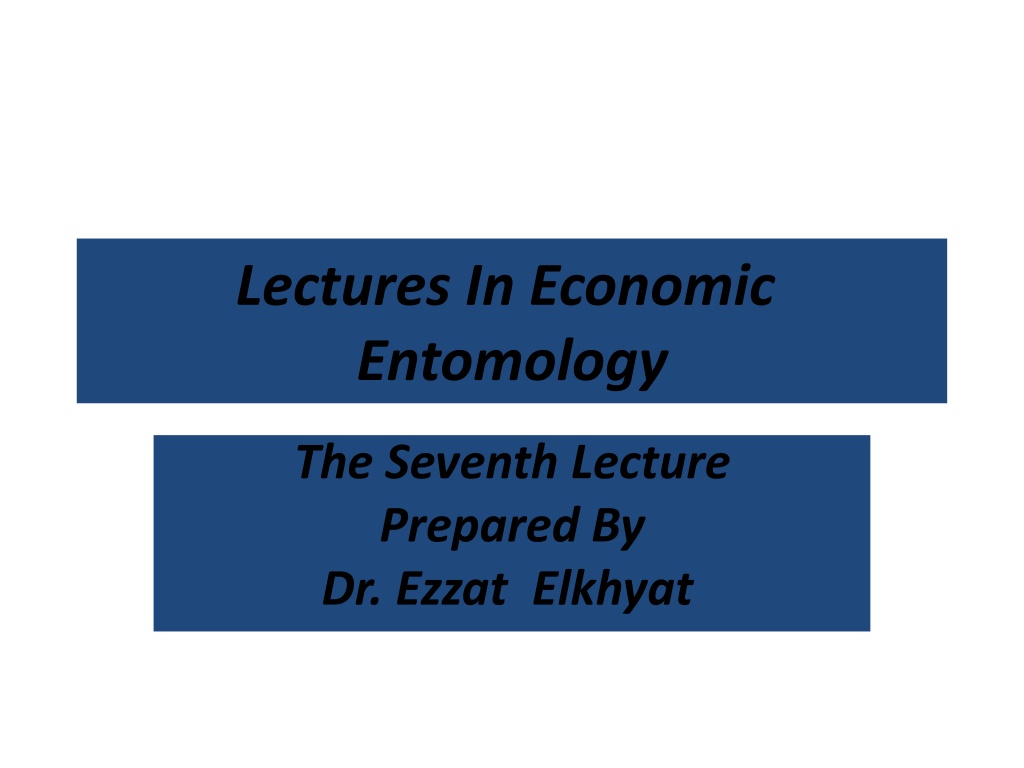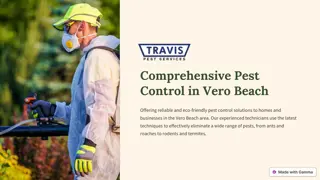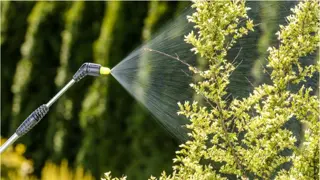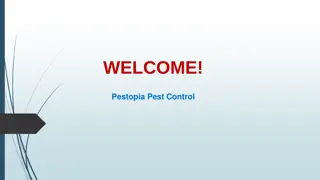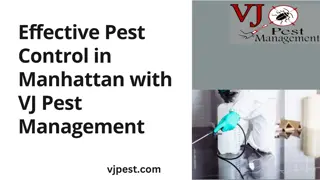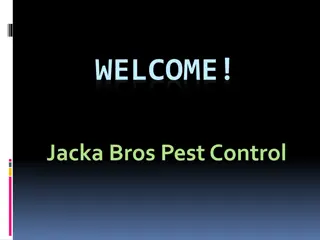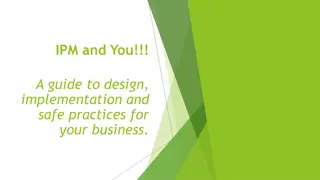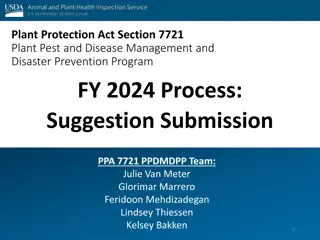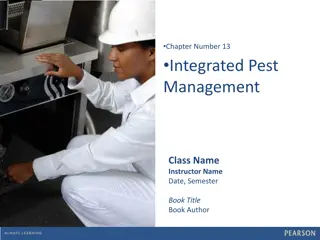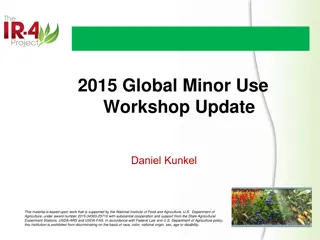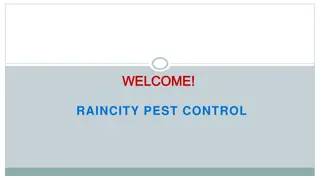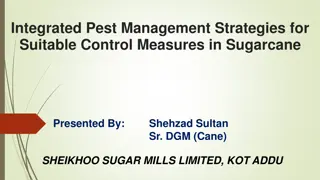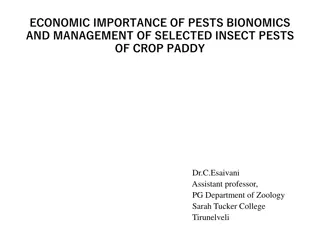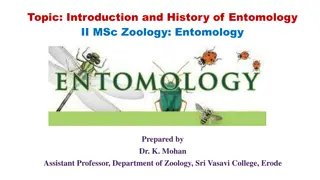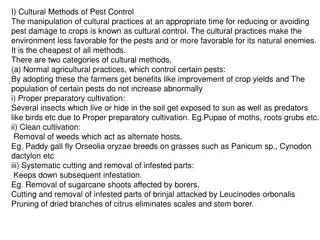Understanding Economic Entomology: A Focus on Pest Management in Horticultural Plants
Explore the world of economic entomology and delve into the study of insects that either benefit or harm humans and their products. Learn about the general definitions of pests, taxonomy of pests, and why insect pests are considered the most important group of pests. Discover the impact of insect pests on vegetable crops and the two main life cycles of these pests attacking horticultural plants. Dive into this intriguing field with Dr. Ezzat Elkhyat's seventh lecture in Economic Entomology.
Download Presentation

Please find below an Image/Link to download the presentation.
The content on the website is provided AS IS for your information and personal use only. It may not be sold, licensed, or shared on other websites without obtaining consent from the author. Download presentation by click this link. If you encounter any issues during the download, it is possible that the publisher has removed the file from their server.
E N D
Presentation Transcript
Lectures In Economic Entomology The Seventh Lecture Prepared By Dr. Ezzat Elkhyat
For students of The second Level Food safety program
Introduction Economic Entomology :-This is the scale of Entomology which is related to the study of insects either benefiting or harming to human or his products or in other definition (Insects which cause loses or happen benefit to human)
- : The general definition of pest There are many definitions 1- This is a plant or animal detrimental to human or human concern . 2 -These organisms that cause nuisance to human either directly or indirectly through their concern 3 - These organisms which are competitor of humanity . 4-These undesirable organisms . for human .
Taxonomy of pests Vertebrate pests :-Birds(Pigeons sparrow crows) Mammals(Mice rate other rodents) Invertebrate pests:-(Insects arachnids nematodes and gastropod and molluscs) Weeds and plant diseases. -
Why insect pests considered the most important group of pests? This is because of their prevailing population with animal kingdom. In this part of study we are studying the economic insect pests attacking Horticultural plants(vegetable crops fruit crops and ornamental crops)
Insect pests attacking vegetable crops There are many insect pests attack vegetables. these insects cause many types of injuries These injuries influence in the market case of these vegetables because the demand of human to consume these vegetables need to it must be free of these injuries
The two forms of life cycles of insects : As you have studied in the previous course of Entomology and the previous part of this course there are two main types of life cycle of insect pests attacking vegetable crops:- Incomplete life cycle and complete life cycle.
Incomplete life cycle type has three stages (ova nymph and adult) such as grasshoppers , bugs, molecricket aphids and so on. Complete life cycle insects have four stages (ova, larva, pupa, adult )such as beetles, moths , flies and wasps .
How insect pests injure vegetables? Insect pests injure vegetables by 1- chewing any part of plant(leaves, stem, root, fruit) . 2- sucking juice 3-by egg laying 4- by making mines . 5- by transmitting diseases .
Chewing insects:- Chewing insects take their food by biting the leaves of plants and injury it such as grasshopper ,locusts, mole crickets, beetles and worms. Many chewing insects have incomplete life cycle (Locusts , Mole cricket ,and Grasshoppers).But there are other chewing insects which have complete life cycle (beetles and worms) .
Sucking insects Sucking insects attacking vegetables include ,stink bugs, leafhoppers, spider mites , and aphids( plant lice) .All sucking insects have incomplete life cycles and have piercing and sucking mouth parts to succulent part of the plant
How the sucking insects damage the plants? The sucking insects damage the plants by reducing the vigor or by injecting a toxin or . disease- causing organisms into the plant Heavy feeding of sucking insects may aport flower or turn yellow of leaves and fall off it. If a sucking insect attacks fruits may be cause catfacing injury, hard spots twisted and misshapen fruits.
Making mines There are many types of mines either mines in leaves or mines in stems and mines in the fruits .The mining insects belong to many orders { Diptera , Coleoptera , Lepidoptera, and Hymenoptera }
The injury appears from laying eggs Most of insect species oviposit eggs. The space in which eggs ovoposited especially in fruits containing more of moisture become damaged.
The injury by transmitting plant diseases The insects especially sucking insects transmite many types of plant diseases. The majority of plant diseases transmitted by insect are viral diseases and followed by parasitic fungi, bacterial diseases and finally diseases caused by protozoa.
Insect pests attacking cruciferous vegetables The cruciferous vegetables are cabbage ,cauliflower, broccoli, turnip, and radish . These vegetables are attacked with some insect pests. The followings are certain only from the attacking insects to cruciferous vegetables.
Cabbage white butterfly S.n. Pieris rapae is the most common pest of cruciferous vegetables . Its larvae have chewing mouth parts . The larvae of the butterfly attract plants by the nectar of cruciferous plants and also they attracted blue and yellow flowers
Life cycle:- Adult female oviposit their eggs on leaves. They prefer the lower surface .These eggs hatch after some days depending on temperature varied from 5-7 days.The small larvae feed only on the lower surface .After 4 instars(15 days) they transfer into green pupae .These pupae seen hanging on plants. After that these pupae transfer to adults
Infestation symptoms :- Eating in the lower surface of leaves and sometimes on the upper surface. With passing time the larvae can make pores in leaves .After that the infested leaves become pored completely.
2- The diamond-back moth Or. Lepidoptera Fam.Tineidae S.n.Plutella macuipennis Life cycle:-Female oviposit eggs on lower surface of host plant . These eggs from2-5 in group. These eggs hatch to larvae . Larvae feed on the lower surface as leafminers . As larvae grow they begin feeding on the external portion of leaves and buds. Larvae transfer to pupae in silk cocoon and after that to adults .
Symptoms of infestation:-Small pores in one side of leaves, after eating on the lower surface. In sharp infestation they infest the heart of plants and injure it.
The control of the two former insect pests Mechanical control by collecting larvae and infested leaves. Eradication of weeds. Biological control by using parapredators. The use of insecticides (Actlec 50% E.C. or. 4 Lanite 90% 300g./fed ) These amounts of pesticides are added to 400-60 L.water.
With my best wishes Ezzat Elkhyat
